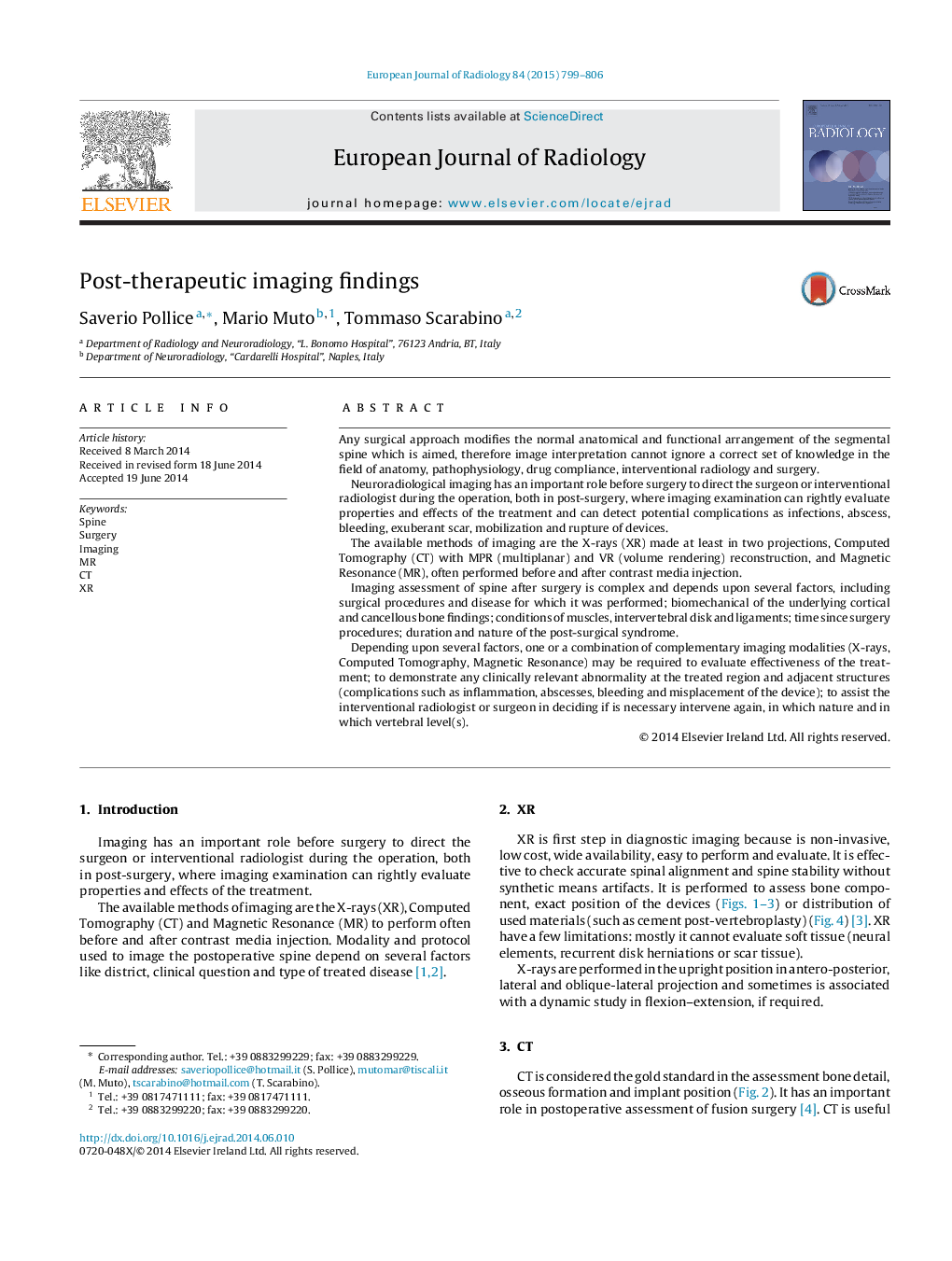| Article ID | Journal | Published Year | Pages | File Type |
|---|---|---|---|---|
| 4225404 | European Journal of Radiology | 2015 | 8 Pages |
•This study is the result of collaboration between neuroradiologists and neurosurgeons.•Comparison between neuroimaging techniques to better evaluate the complications after treatment of the spin.•Evaluation of the imaging features of complications and definition of follow-up.
Any surgical approach modifies the normal anatomical and functional arrangement of the segmental spine which is aimed, therefore image interpretation cannot ignore a correct set of knowledge in the field of anatomy, pathophysiology, drug compliance, interventional radiology and surgery.Neuroradiological imaging has an important role before surgery to direct the surgeon or interventional radiologist during the operation, both in post-surgery, where imaging examination can rightly evaluate properties and effects of the treatment and can detect potential complications as infections, abscess, bleeding, exuberant scar, mobilization and rupture of devices.The available methods of imaging are the X-rays (XR) made at least in two projections, Computed Tomography (CT) with MPR (multiplanar) and VR (volume rendering) reconstruction, and Magnetic Resonance (MR), often performed before and after contrast media injection.Imaging assessment of spine after surgery is complex and depends upon several factors, including surgical procedures and disease for which it was performed; biomechanical of the underlying cortical and cancellous bone findings; conditions of muscles, intervertebral disk and ligaments; time since surgery procedures; duration and nature of the post-surgical syndrome.Depending upon several factors, one or a combination of complementary imaging modalities (X-rays, Computed Tomography, Magnetic Resonance) may be required to evaluate effectiveness of the treatment; to demonstrate any clinically relevant abnormality at the treated region and adjacent structures (complications such as inflammation, abscesses, bleeding and misplacement of the device); to assist the interventional radiologist or surgeon in deciding if is necessary intervene again, in which nature and in which vertebral level(s).
